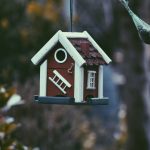Welcome. We’re glad you’ve taken the opportunity to learn more about green roofs and their potential impact on property insurance costs in the UK. This article acts as an in-depth guide and resource, providing you with a comprehensive understanding of the subject.
The Basics of Green Roofs
Before diving into the main issue, it’s worthwhile to get a solid grasp of what a green roof is and how it functions. Simply put, a green roof is a roofing system that, instead of being covered by traditional roofing materials, is covered by vegetation or plants. This feature makes it a great contributor to the environment and a fantastic addition to modern buildings.
A lire également : What Are the Impacts of the UK Building Safety Bill on Property Insurance?
Green roofs come in two varieties: extensive and intensive. Extensive green roofs are thinner, lighter, and require less maintenance, making them suitable for residential buildings. On the other hand, intensive green roofs are deeper, heavier, and require more maintenance, which makes them ideal for commercial buildings that can support the extra weight.
The primary components of a green roof include a waterproof layer, a root barrier, a drainage layer, a growing medium (soil), and the most visible part, the green layer of plants. The water drainage layer is particularly crucial as it prevents water from accumulating on the roof and causing damage.
Sujet a lire : What Are the Essential Considerations for Insuring a Heritage Property in Scotland?
How Green Roofs Impact Property Insurance
Now that you’ve got the basics down, let’s delve into how green roofs can affect property insurance costs. Understandably, insurance companies are concerned with risk. If a feature of your property reduces risk, it makes sense that it will decrease your insurance premiums.
Green roofs offer a multitude of benefits that could potentially reduce insurance costs. For instance, green roofs can reduce the risk of damage from fire. The plants on the roof form a natural barrier against fire, slowing its spread. Furthermore, green roofs also provide protection against weather damage. They create a buffer against hail, wind and heavy rains, mitigating the risk of damage to the roof structure.
In terms of water damage, the layered system of a green roof helps manage water runoff. It slows down water flow, reducing the risk of flooding and subsequent water damage to the property.
Will Your Insurance Cover Green Roof Installation?
The question of whether your insurance will cover the installation of a green roof might be swirling in your minds. Because insurance policies vary significantly, it’s essential to discuss this with your insurance provider.
Typically, insurance would cover the cost of restoring the roof to its original state before any loss or damage occurred. Therefore, if you have a green roof and a covered loss occurs, your insurance should pay for the restoration of the green roof. Provided, of course, that the loss is a covered peril.
However, insurance may not cover the cost of initially installing a green roof. The installation of a green roof can be an expensive process, particularly for an intensive green roof. Therefore, it’s crucial to consider these costs and budget accordingly when planning to install a green roof.
Building a Case for Green Roofs
Beyond the potential insurance benefits, green roofs offer an array of advantages. They enhance the aesthetic appeal of a building, attract wildlife, and provide a habitat for various species, promoting biodiversity.
In urban areas, they can significantly reduce the heat island effect. The plants on the roof absorb sunlight, reducing the amount of heat reflected off the building and lowering the ambient temperature.
Green roofs are also excellent insulators. They keep buildings cool in the summer and warm in the winter, thus reducing energy costs. Furthermore, by absorbing and filtering rainwater, they reduce stormwater runoff, decreasing the strain on sewer systems.
Reading the Fine Print
As with all things related to insurance, it’s essential to thoroughly reading the fine print in your policy. While green roofs can potentially reduce your property insurance costs, it’s not a guaranteed outcome.
Insurance companies consider a variety of factors when setting premiums, including the location of the property, the building’s construction type, and the specific features of the green roof. Some insurers may offer discounts for green roofs, while others may not.
Therefore, before installing a green roof, it’s advisable to have a candid conversation with your insurance provider. Discuss the potential impact of a green roof on your premiums and ensure you’re well-informed before making a decision. An insurance broker or an independent agent can be particularly helpful in this regard, as they can compare different policies and guide you towards the most beneficial choice.
The Practicalities of Green Roofs Installation
Now that we’ve covered the basics of green roofs and their potential impact on property insurance costs, let’s delve into the practicalities of installing green roofs. As you contemplate adding this ecological feature to your building, it’s essential to consider the structural capacity of the building, planning permissions and the initial costs.
The very first step to installing a green roof on your property involves an assessment of the building’s structural capacity. It’s crucial to ensure that the roof can bear the weight of the green roof, particularly if you’re considering an intensive green type. Consulting with a structural engineer may be necessary to verify the load-bearing capacity of your roof.
In terms of planning permission, it’s generally not required for green roofs in the UK, unless the property is listed or located in a conservation area. However, it’s always prudent to check with your local planning authority to avoid any future issues.
The initial costs for installing a green roof can be high, especially for an intensive green roof. However, these costs can be offset over time by the potential savings on your heating and cooling bills, reduced maintenance costs, and possibly, lower property insurance premiums.
In Conclusion: The Pros and Cons of Green Roofs
Wrapping up, it’s clear that green roofs offer numerous benefits, not only for your property but also for the environment. However, it’s important to weigh the pros and cons carefully to ensure that a green roof is the right choice for your property.
The benefits of a green roof are extensive. They can potentially reduce your insurance premiums by mitigating risks such as fire and weather damage. They also reduce the heat island effect, lower energy costs, and promote biodiversity. Furthermore, they can enhance the aesthetic appeal of your property, and by managing stormwater runoff, they help relieve the strain on local sewer systems.
On the downside, the initial installation cost of a green roof can be high. Intensive green roofs, in particular, require a substantial investment. Moreover, the load-bearing capacity of your building and the requirement of planning permission are other considerations.
However, with potential savings on energy and insurance costs and the numerous environmental benefits, a green roof can be a worthwhile investment. Remember, it’s crucial to discuss with your insurance provider and read the insurance policy thoroughly before making a decision. This way, you can ensure you make the most informed choice for your property.






